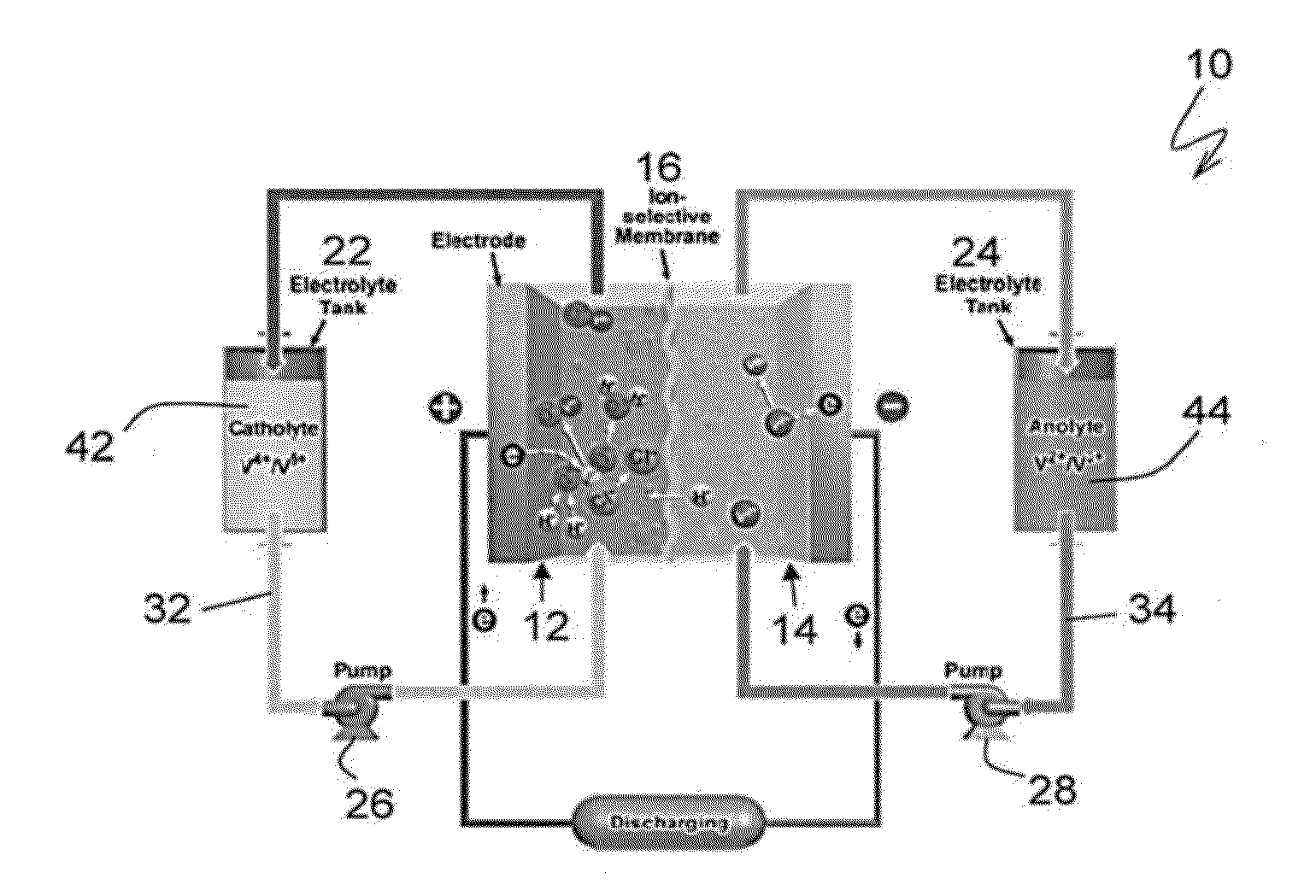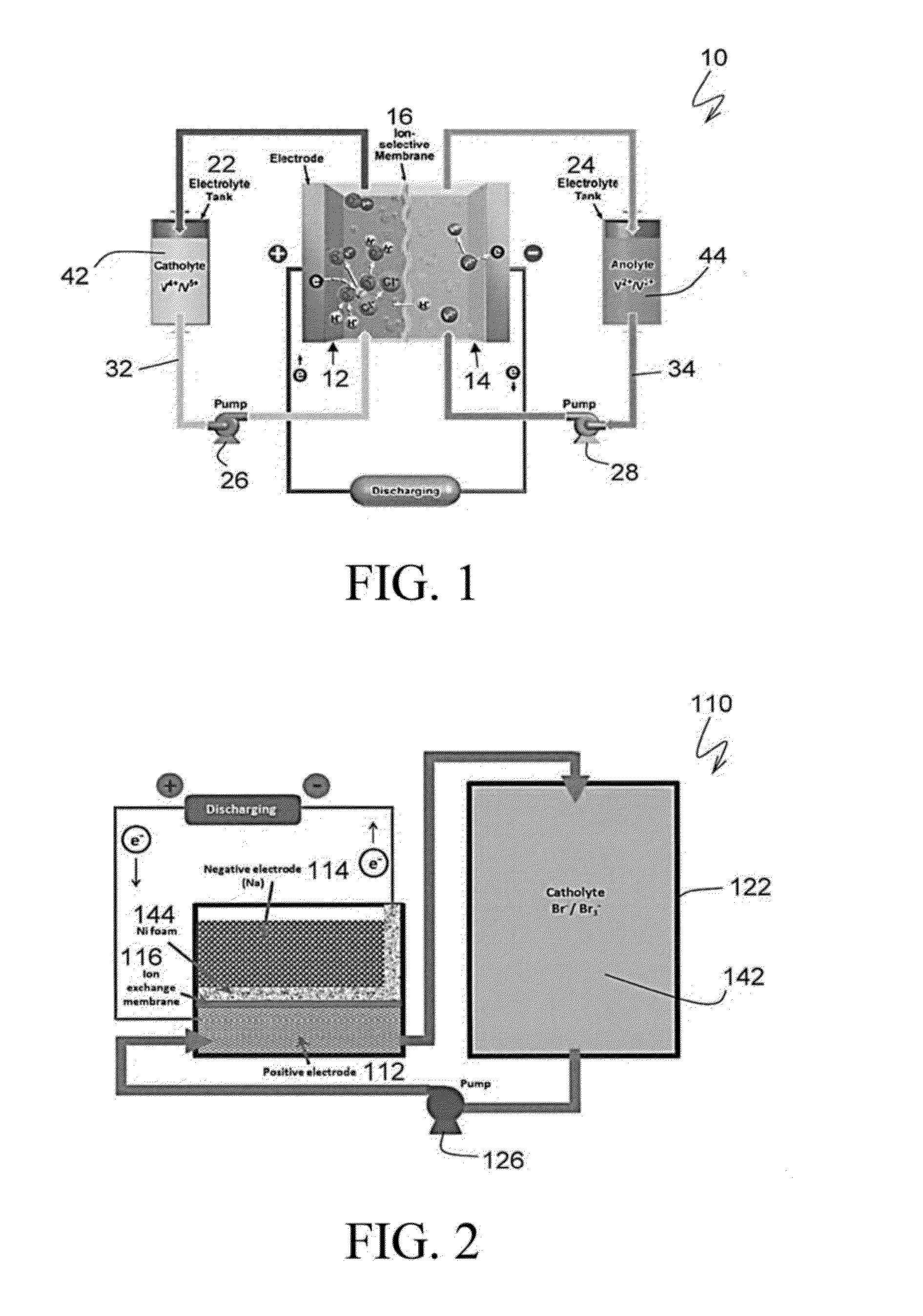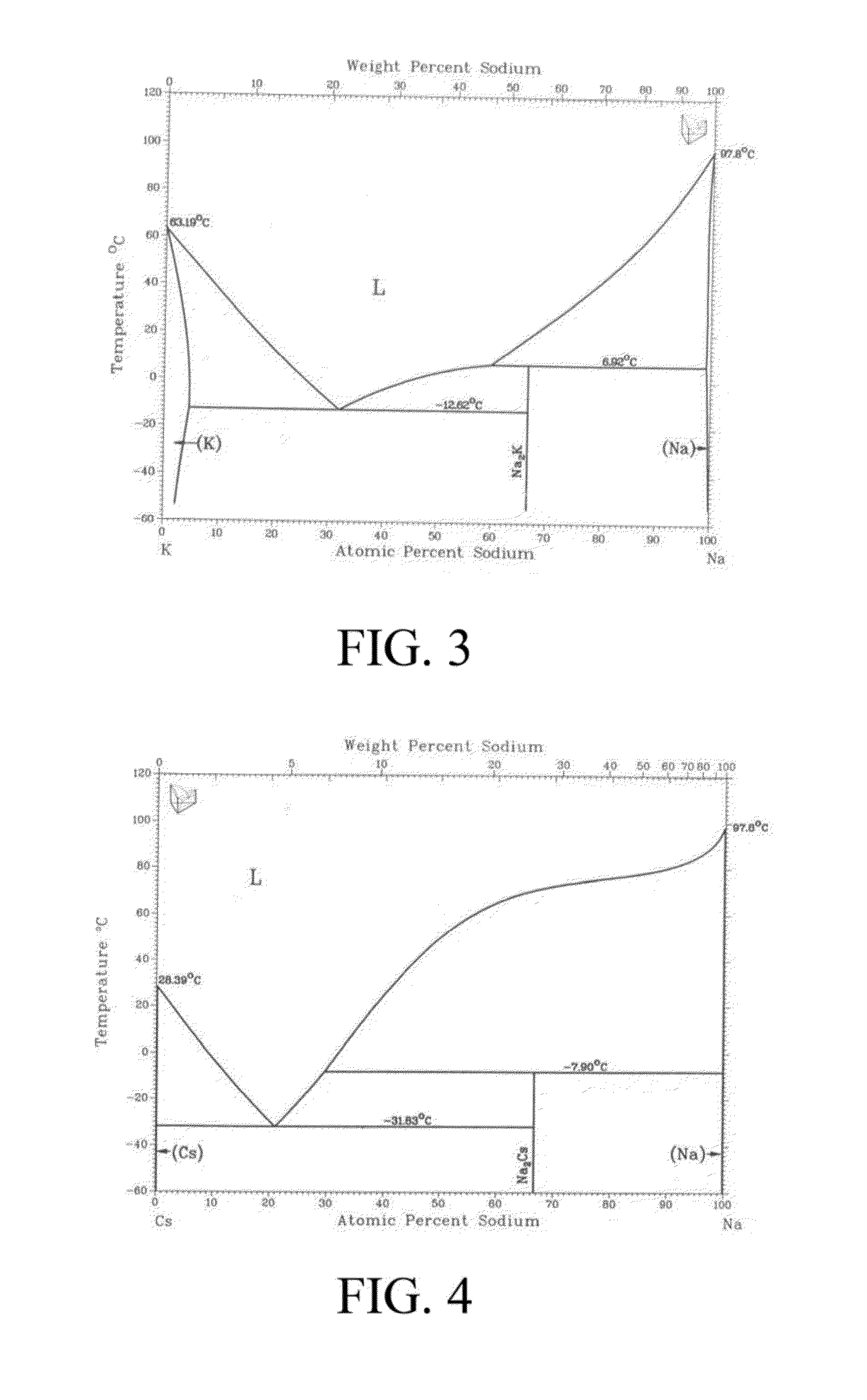Sodium-based hybrid flow batteries with ultrahigh energy densities
a sodium-based hybrid flow battery and ultra-high energy density technology, applied in the field of redox flow batteries, can solve the problems of rapid performance degradation and the potential for very long cycle life of rfb electrodes
- Summary
- Abstract
- Description
- Claims
- Application Information
AI Technical Summary
Benefits of technology
Problems solved by technology
Method used
Image
Examples
example 1
Open Circuit Voltage (OCV) for the Following Anode / Cathode System
Experimental Conditions
[0059]Anode: Na-44 wt % K[0060]Cathode: 1M Fe(NO3)3 solution with a small amount of sodium dodecyl sulfate (SDS) surfactant[0061]Ion exchange membrane: β″-Al2O3 disc[0062]Temperature: 25° C.[0063]Device used to measure the electrochemical properties: a VersSTAT4 potentiostat / galvanostat (made by Princeton Applied Research)
[0064]The half-cell and full reactions for this system can be written approximately as follows:
[0065]The measured OCV was 3.36 V (see FIG. 8), i.e., 0.1 V lower than the theoretical value.
example 2
Current Measured from Cyclic Voltammetry Using a Two-Electrode Setup
Experimental Conditions
[0066]Anode: Na-80 wt % K[0067]Cathode: 6M NaBr solution[0068]Ion exchange membrane: β″-Al2O3 disc[0069]Temperature: 25° C.[0070]Device used to measure the electrochemical properties: a VersSTAT4 potentiostat / galvanostat (made by Princeton Applied Research)
[0071]The half-cell and full reactions for sodium / sodium tribromide system can be written approximately as follows:
The current was measured at the cathode during cyclic voltammetry using a two-electrode setup (i.e., the working electrode: NaBr, and the counter electrode: Na-80% K). As shown in FIG. 9, the current was a function of the overpotential. The measured current, however, was low. The largest current measured was only 0.8 mA. This was not unexpected as the cathode at the electrode side was not optimized.
example 3
Charge / Discharge of a Floating Solid Na Anode Versus a Manganese Acetylacetonate Catholyte without Stirring
Experimental Conditions
[0072]Anode: a solid Na chuck floating on top of an ionic liquid (IL), methyl-butyl-pyrrolidinium bis(trifluoromethylsulfonyl) imide, with 0.1M sodium trifluoromethylsulfonyl imide (NaTFSI) salt[0073]Cathode: 0.05M manganese acetylacetonate (Mn(acac)3) dissolved in acetonitrile (CH3CN) with a tinned copper current collector[0074]Ion exchange membrane: β″-Al2O3 disc[0075]Temperature: 25° C.[0076]Device used to measure the electrochemical properties: a VersSTAT4 potentiostat / galvanostat (made by Princeton Applied Research)
The expected electrochemical reaction at the anode was:
NaNa++e−E0=−2.7 V vs. SHE (1)
Several possible electrochemical reactions could take place at the catholyte:
Mn4++e−Mn3+ E0=1.5 V vs. SHE (2)
Mn3++e−Mn2+ E0=0.4 V vs. SHE (3)
Mn2++2e−Mn0 E0=−1.18 V vs. SHE (4)
[0077]If all of the reactions above are completed, four (4)-electron transfer ...
PUM
| Property | Measurement | Unit |
|---|---|---|
| specific energy | aaaaa | aaaaa |
| energy density | aaaaa | aaaaa |
| operating voltage | aaaaa | aaaaa |
Abstract
Description
Claims
Application Information
 Login to View More
Login to View More - R&D
- Intellectual Property
- Life Sciences
- Materials
- Tech Scout
- Unparalleled Data Quality
- Higher Quality Content
- 60% Fewer Hallucinations
Browse by: Latest US Patents, China's latest patents, Technical Efficacy Thesaurus, Application Domain, Technology Topic, Popular Technical Reports.
© 2025 PatSnap. All rights reserved.Legal|Privacy policy|Modern Slavery Act Transparency Statement|Sitemap|About US| Contact US: help@patsnap.com



